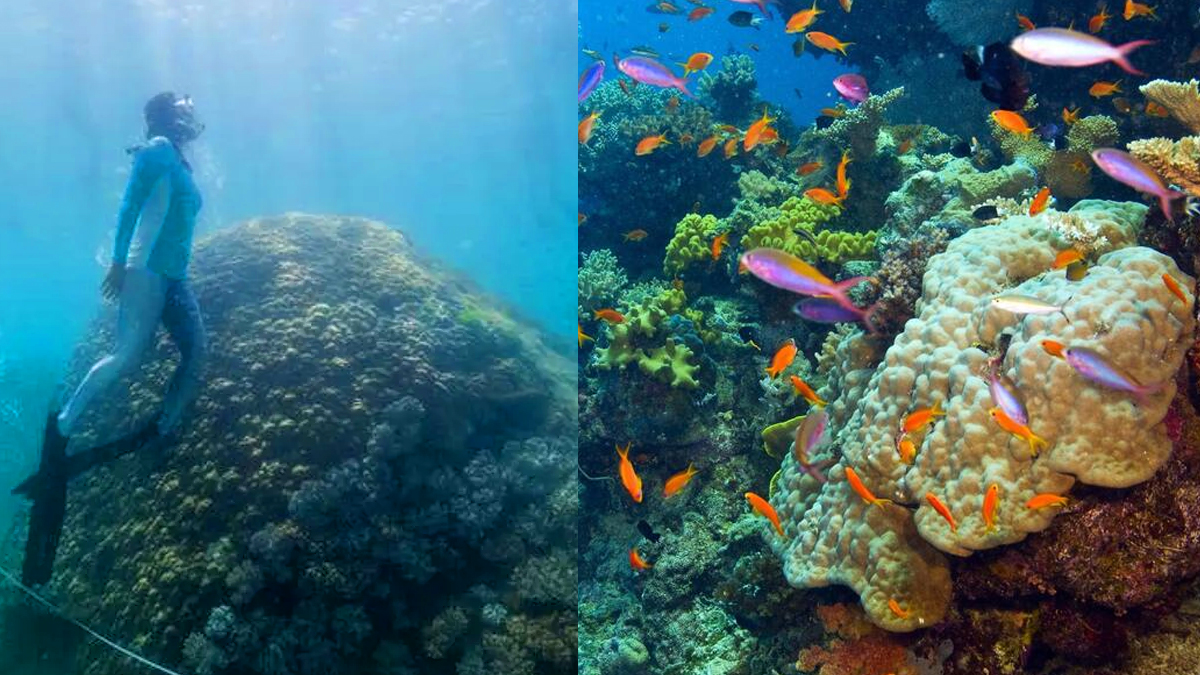Environment
Scientists Thrilled by Discovery of Rare, Mammoth 400-Year-Old Coral
The “exceptionally large” coral is about 35 feet wide and over 17 feet high, with myriad fish and other species calling it home.

A massive 400-year-old hard coral discovered on the Great Barrier Reef has scientists expressing their sense of surprise and excitement.
Named Muga dambhi by the Manbarra people, the Indigenous group who have traditionally taken care of the land, the “exceptionally large” brown and cream-colored coral is located off the coast of Goolboodi or Orpheus Island in the Great Barrier Reef.
It is believed that the coral was spawned some 421 to 438 years ago, meaning that its age predates the arrival of Captain James Cook and the advent of colonization in Australia, notes the Guardian.
The spectacular coral is about 35 feet wide and over 17 feet high, and is double the size of the nearest coral.
Scientists and members of the community participating in a marine science course discovered the specimen earlier this year.
While not the largest coral in the world, the huge find is of major significance to the local ecosystem, according to Adam Smith, an adjunct professor at James Cook University who wrote the field note on the find.
“It’s like a block of apartments,” Smith said. “It attracts other species. There’s other corals, there’s fish, there’s other animals around that use it for shelter or for feeding, so it’s pretty important for them.”
“It’s a bit like finding a giant redwood tree in the middle of a botanic gardens,” he added.
It is likely that the coral hasn’t been discovered for such a long time due to its location in a relatively remote and unvisited portion of a Marine National Park zone that enjoys a high degree of protection.
“Over the last 20 or 30 years, no one has noticed, or observed, or thought it newsworthy enough to share photos, or document, or do research on this giant coral,” Smith said.
The coral is in remarkable condition, with over 70 percent of its surface covered in live coral, coral rock and microalgae. No disease, bleaching or recently deceased coral has been recorded on the specimen.
“The cumulative impact of almost 100 bleaching events and up to 80 major cyclones over a period of four centuries, plus declining nearshore water quality contextualise the high resilience of this Porites coral,” the field note added.
The specific coral has been given the name Muga dhambi, meaning big coral, out of respect for the Indigenous knowledge, language, and culture of the Manbarra Traditional Owners.
Typos, corrections and/or news tips? Email us at Contact@TheMindUnleashed.com
